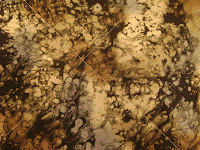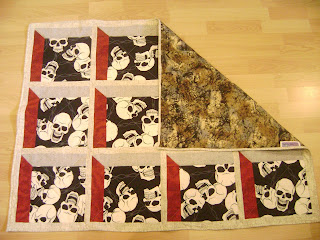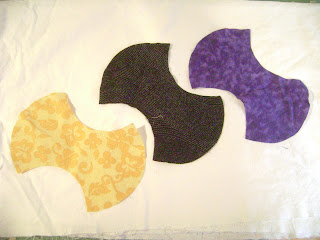All quilts are manifestations of journeys. Some represent a journey already in flight, others a journey still to come. Quilts can be commemorative, celebratory, representing life’s memorable moments, life itself, and, sadly, sometimes, death. At times they are reminiscent of the past and other times they represent a hope for the future. And quilting itself is a journey, one of color, patterns, reflection, and artistry. Some quilting journeys are short while other last years. This post is about my longest quilt journey yet. It has taken me about 7 years (I think) to complete this quilt, though I’ve done other pieces during all this time. I’ve also learned a lot from the making of this quilt.
Years ago my mother gave me a book, called American Quilters, Women and Domestic Art, written by Patricia cooper and Norma Bradley Burferd and published in 1978. This book contains stories and photographs of quilts and quilters and was my first quilt related book. I began looking at patterns, deconstructing them in my head, reconstructing them on graph paper, and thus making my own templates for cutting fabric. I’ve spent hours and hours with this book, and my trusty graph paper, and have made several quilts using patterns I saw in the book. One such pattern was particularly intriguing to me. The picture in the book was of a scrappy quilt made of many pieces that were all one shape. I later learned this is called a one-block quilt. I was also intrigued by the curvy lines of the quilt; not a single seam was straight. Not one.
I tried to find the design in the stores or in other books but could not as I didn’t know what it was called. I looked in library books, in catalogs in fabric stores, online. I asked people in the stores, and looked further online. I found nothing. Finally I went to a specialty quilting shop here and piqued the owner’s interest enough for her to come on the journey with me. Together we looked at her books, from the store as well as from her private collection and finally, finally, I learned what the pattern is called. But this created another set of questions as the pattern has two names, which flow across regions and historical periods: sometimes the pattern is called “apple core” and other times it is called “double axe”. I’ve since done some more research but I haven’t yet discovered the history or development of this double name. (Many quilt patterns have multiple names, I’ve learned.)
I decided I need to make one. So I figured out from the photograph in the book, and with the help of the fabric store lady, how to make a template. I made one out of construction paper and set to work cutting pieces. Since these pieces are indeed all curvy lines, the rotary cutter is beyond useless here. No, this I had to do the old fashioned way. I marked the lines on fabric then cut each piece with scissors.
I have, I think, 625 of these pieces. Next I sewed them into pairs, then into quatrains and so on, like this:
I sewed all of the pieces by hand, since my machine’s ability to sew curvy lines was very frustrating for me, and this is, in part, why it has taken me so long to finish this quilt. However, since I’ve been working on it for years, I’ve been able to add pieces from other projects along the way, and this creates a quilt that tells related journeys within it; I can now look at it and see clothes I’ve made for my girls, baby quilts I’ve made, several wedding quilts, even some costumes. It includes fabrics from my stash, that of my sister-in-law’s, and the oldest piece is from a dress my other sis-in-law’s grandmother made for her daughter (sis-in-law’s mother) when she was a teenager. It includes fabrics from pieces I’ve made for family and friends, pieces I’ve made in celebration of new life and some in hopes of health.
(I’ll have to have another post with more close ups of some of these memorable fabrics.)
This past December I finally finished it, and it’s now a bed spread for my parents. It is roughly three yards squared. The entire piece is hand sewn, except for the binding, and the quilting is done with knots of embroidery thread.
The quilt-making journey is done with this piece; now it starts its next journey, as a finished quilt that tells of history, and family. The only thing I haven’t done yet is sign it. I just don’t know what to call it.
Here's the finished piece, on my parents' bed:































